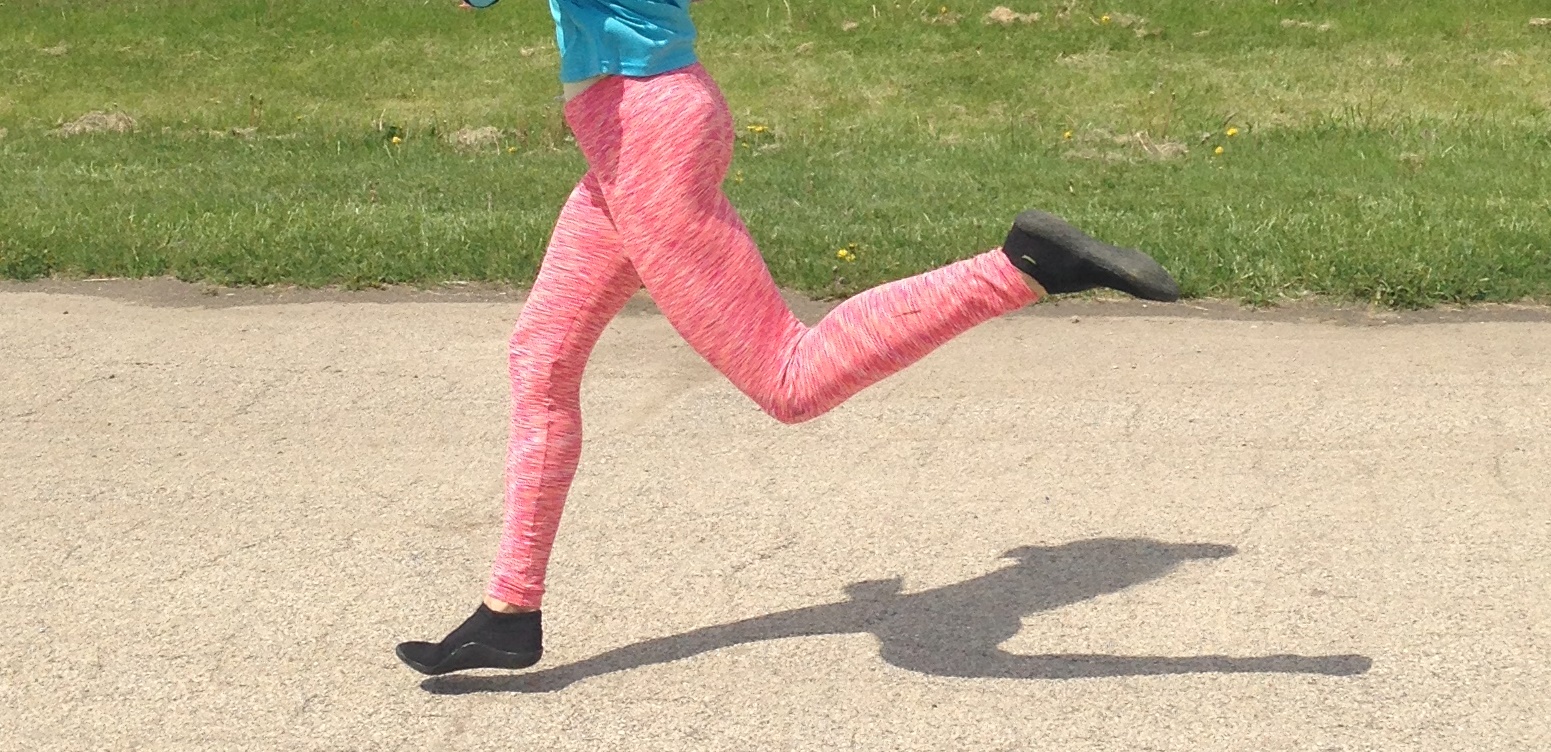Some new forefoot runners and barefoot runners may experience bouts of medial tibial stress syndrome. There could be many reasons why this condition creeps up, but one study suggests that fatigue calves related to the early stages of learning forefoot running may cause your shins to hurt.
Another Reason New Forefoot Runners May Get Medial Tibial Stress Syndrome
In forefoot running, the calves have greater mechanical demands than in heel strike running, which is why heel strike runners who transition to forefoot running experience extremely sore calves. Fortunately, the calf pain disappears with significant adaptations of the calf muscles to forefoot running. During this time, a new forefoot runner may also get hit with medial shin splints, but the condition may not be related to anything you are doing wrong with your mechanics, rather your calves are a little fatigued from learning the forefoot running technique.
A study by Brown, 2015 examined the relationship between the site of medial tibial stress syndrome and the muscles that originate from the site in human cadavers and found that certain parts of the calf muscle, the flexor digitorum
longus and soleus, attached to the area of the shin where medial tibial stress syndrome is often felt, suggesting that both the flexor digitorum longus and soleus muscles could very likely play a role in the development of medial tibial stress syndrome in runners, especially in new forefoot runners since these muscles are highly engaged in forefoot running. Along these lines, it is not surprising that a new forefoot runner may get sore shins. The important thing is you may not have a specific error in your biomechanics, rather your calves are adapting to forefoot running and need time. From here, it is not rocket science what you need to do:
- rest a little
- if you continue to run, then listen to your body and make adjustments to your form that allows you to land lighter with a shorter stride
- avoid stretching
- go barefoot outdoors more often
- avoid running shoes with excessive cushioning
- do calf strengthening exercises, such as calf raises
More From Run Forefoot:
How Heel Strike Running Causes Shin Splints
Changing Your Step Width During Running May Reduce Shin Splints
How Landing on the Outside of Your Forefoot Prevents Shin Splints
Dealing with a Fractured Shin Bone
References:
Brown, AA. Medial Tibial Stress Syndrome: Muscles Located at the Site of Pain. Hindi Pub Corop Scient, 2016; http://dx.doi.org/10.1155/2016/7097489.
Bretta Riches
BSc Neurobiology; MSc Biomechanics candidate, ultra minimalist runner & founder of RunForefoot. I was a heel striker, always injured. I was inspired by the great Tirunesh Dibaba to try forefoot running. Now, I'm injury free. This is why I launched Run Forefoot, to advocate the health & performance benefits of forefoot running and to raise awareness on the dangers of heel striking, because the world needs to know.
Latest posts by Bretta Riches (see all)
- Forefoot Running and Achilles Pain - 19/04/2024
- Does Foot Strike Really Matter in Running? YES! - 17/04/2024
- Heel Lifts Increase Injury in Runners - 16/04/2024

